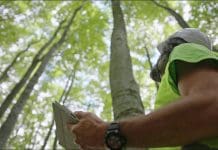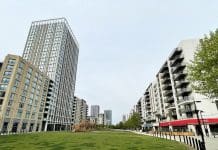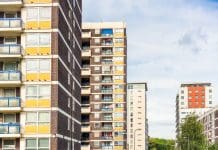Stephanie Kosandiak, Lead Programme Manager at BSI and Kathryn Bourke, Technical Author of building components durability standard, BS 7543 discuss its fit with service life planning standards…
Current government policy aims to reduce carbon emissions by 2050 by 80% (from the 1990 baseline). One way to achieve this is by exploring the durability of buildings and their component parts. The revision of BS 7543:2003 Guide to durability of buildings and building elements, products and components, here, provides users with a set of default values for service life data, enhancing the robustness of data utilised within models that predict the life cycle cost, and the life cycle carbon of building components and materials.
The revision takes into account the emerging CEN/TC/350 European suite of standards for the sustainability of construction works which set out frameworks and calculation methodologies. The environmental and economic aspects of sustainability rely on service life data, and whilst there is strong international standard guidance on the framework of service life planning (ISO 15686), data to carry out life cycle cost and life cycle embodied carbon calculations is lacking in the standards arena.
How does this then fit in with Building Regulation 7 and its associated Approved Document? These are short and simple, and require that:
Building work shall be carried out—
With adequate and proper materials which:
(i) are appropriate for the circumstances in which they are used
(ii) are adequately mixed or prepared, and
(iii) are used or fixed so as adequately to perform the functions for which they are designed: and
(b) in a workmanlike manner.
Although the Approved Document was amended for the 2013 edition, primarily to reflect the publication of the Construction Products Regulation and evidence of performance in CE marking, the basic requirement has largely remained unchanged since 1985 at least, when it was referenced in Approved Document F alongside ventilation and condensation guidance, both of which have expanded massively since then.
So, where do designers go for the basic approach to meeting the requirement for adequate and proper materials which are fit for the purpose? Oddly enough, the British Standards guidance has gone through an even longer evolution.
Back in 1950, BSI published CP 3 Part IX – the Code of Functional Requirements of Buildings – this chapter covered the issue of durability in just a couple of pages, with more extensive appendices.
The overarching requirement was to take into account:
• Locality
• Conditions
• Workmanship and
• Maintenance.
It provided for buildings with a design life ranging from 10 to 100 years. It recognized that elements or parts did not need to last as long as the building design life – particularly if they were accessible for maintenance and replacement.
CP3 Part IX stayed valid all the way to 1992, when it was superseded by BS 7543 – the Guide to Durability of Buildings and Building Elements, Products and Components.
At that point it was anticipated that international standards being prepared (ISO 15686 series) on service life planning, would supersede the standard, but the BS provided extensive UK specific guidance which wasn’t in fact covered internationally, so in 2003 it was significantly reduced in scope, taking account of BS ISO 15686-1 (2000) the General Principles part on service life planning. The ISO 15686 series of guidance has now reached 11 parts – covering aspects from life cycle costing (Part 5) to testing (Part 2) and Reference Service Life (Part 8). Nevertheless, the UK committee responsible for BS 7543 felt there was ongoing demand for the British Standard. BSI agreed, and in early 2014 drafting commenced.
From the outset, BSI recognised the growing demand for prediction of service life data in respect of both life cycle costing and embodied carbon calculations (e.g. for the Green Deal), and the need to reflect climate change and built environment adaptation for more extreme weather conditions. A drafting panel was convened, comprising representatives from key professional institutions such as RICS and RIBA as well as NHBC and BBA, and experienced specialists from a range of disciplines including insurance and construction. Drafting work was undertaken for the panel by Kathryn Bourke of Whole Life Ltd and Mike Clift formerly of BRE.
Some of the key changes made in the guidance included the introduction of an approach to risk assessment of durability and service life including use of failure mode effect and criticality techniques (clause 6), data on climate updated to reflect current understanding (Annex A) and detailed guidance on standards and good practice guidance for a wide range of materials (Annexes B and E). The Annex covering known durability aspects has been updated to reflect current experience.
BS 7543 now fully complements international standards in the BS ISO 15686 series and clarifies the different terms in use – from design life to predicted and reference service life. It also reflects recent CEN standards on integrated assessment of sustainability (BS EN 15643 series). It also complements more recent UK guidance on life cycle costing of maintenance in BS 8544:2014. It aims to ensure that data on service life planning for Building Information Modelling is robust.
Perhaps the easiest way to summarise the guidance included is to consider the worked example included in Annex D – a design life data sheet showing an assessment of service life of the various systems which comprise a façade. The purpose of this sheet would be to allow the designer to communicate expectations and associated maintenance requirements to the client from the earliest stages of design.
Systems are categorized as lifelong, maintainable or replaceable. The reference service life of each is recorded, together with the consequences of failure. These range from danger to life or injury (category A), through costly repairs (category D) or interruption to use (category F).
Following this process allows both designer and client (and other interested parties such as the contractor and insurers) to ensure that the required functionality of the building has been met. As such the guidance neatly reflects the basic requirements of Regulation 7 and its Approved Document. ■
The updated BS 7543 Guide to durability of buildings and building elements, products and components was published in 2015. Available here.
. . . . . . . . . . . . . . . . . . . . . . . . . . . . . . . . . . . . . . . . . . . . . . .
Stephanie Kosandiak
Lead Programme Manager for Construction
Kathryn Bourke
Technical Author
BSI (British Standards Institution)
Tel: +44 (0) 845 086 9001
cservices@bsigroup.com
















